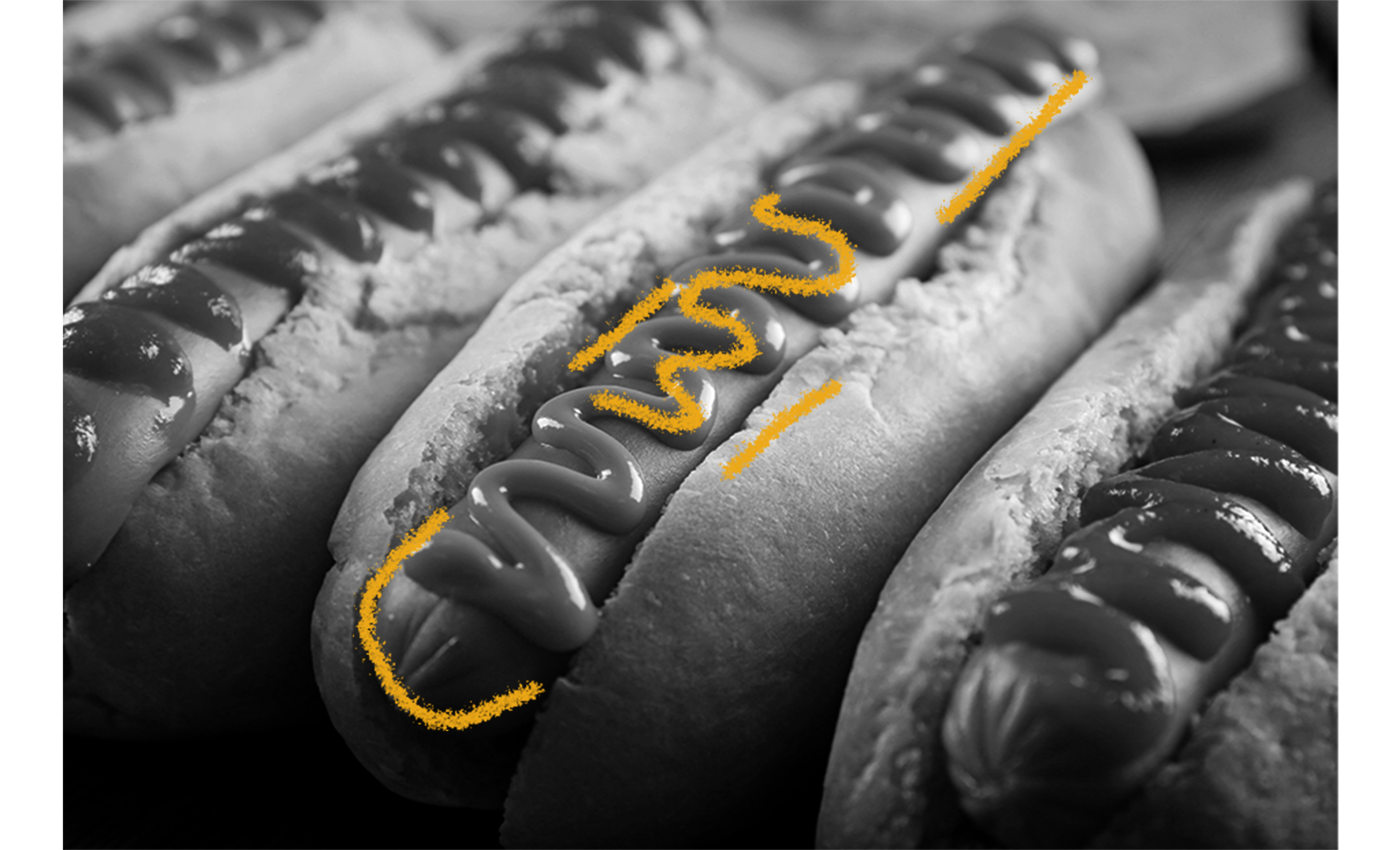The non-kosher version of the American hot dog is thought to have evolved from the German frankfurter sausage, which is made from beef and pork. When German immigrants arrived in America, they brought their frankfurter sausages with them and began selling them at food carts on a bun — mostly to the working class in major cities. They became popular on New York City’s Lower East Side, which was also home to a large Jewish population. Eventually, Jewish butchers began to create a kosher beef version of the non-kosher pork-based hot dog. Soon the Hebrew National Kosher Sausage Factory, established in 1905, was making them on the Lower East Side, and when Romanian butcher Isadore Pinckowitz bought the company in 1928, he began to sell Hebrew National kosher hot dogs to New York delis. By the 1940s, Hebrew National hot dogs could be found in suburban supermarkets, and by the 1960s, they were running ad campaigns with taglines like, "We answer to a higher authority." One of the reasons that Hebrew National’s kosher hot dogs appealed to non-Jewish consumers was the original name of the American hot dog — "dachshunds" or "little dogs” — which caused people to fear that it could contain dog meat or other unsavory animal parts. Because many consumers were aware that Jewish laws forbid them from eating dogs or horses, there was a perception that kosher hot dog ingredients were cleaner or safer. This perception, while not necessarily accurate, helped Hebrew National kosher hot dogs become the highly popular item that they are today. There is also a difference in taste — kosher hot dogs are typically made with a garlicky spice blend while pork hot dogs usually have a smokier flavor. Today, kosher hot dogs are available at grocery stores, Jewish delis, and are even a menu item at MLB ballparks. While a number of Orthodox Jews have challenged Hebrew National’s kosher status, most of their consumers are not Jewish and do not keep kosher, and the iconic kosher hot dogs remain a summer staple for many Americans today.

Your go-to guide for weird history facts
Subscribe to the FREE daily email that makes learning about history fun.


